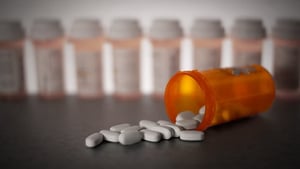Prescription Drug Coverage for ESRD Patients
(Gleaned from the 2018 USRDS Annual Data Report: Volume II: Chapter 10)
Pharmaceutical therapy is integral to ESRD treatment and has positive health outcomes.  Medications combined with the clinical and socioeconomic status of ESRD patients make their prescription drug benefits particularly important. Drug coverage, drug-related costs, and patterns of prescription drug use for end-stage renal disease (ESRD) patients is irrelevant information. Analgesics used by ESRD patients is of particular interest because of the continuing opioid epidemic. Another category of prescription meds worth examining is prescription antivirals, a category with high and growing costs.
Medications combined with the clinical and socioeconomic status of ESRD patients make their prescription drug benefits particularly important. Drug coverage, drug-related costs, and patterns of prescription drug use for end-stage renal disease (ESRD) patients is irrelevant information. Analgesics used by ESRD patients is of particular interest because of the continuing opioid epidemic. Another category of prescription meds worth examining is prescription antivirals, a category with high and growing costs.
- Medicare Part D prescription drug benefit began on January 1, 2006. In 2016, 71.6% of the general Medicare population were enrolled in a Medicare Part D prescription drug plan. Seventy-eight percent of ESRD patients participated.
- Among beneficiaries with Medicare Part D enrollment, a higher proportion of those treated with hemodialysis (HD; 65.5%), peritoneal dialysis (PD; 52.3%), and kidney transplant (50.3%) took advantage of the Lower Income Subsidy (LIS) benefit than did the general Medicare population. Sixty-one percent of ESRD Medicare beneficiaries received the LIS benefit, compared to only 30.2% of the general Medicare Part D population.
- In 2016, per patient per year, Medicare Part D spending on prescriptions for ESRD patients was $13,310 — over four times higher than spending for the general Medicare population at $3,559 per patient.
- Of patients enrolled in stand-alone Medicare Part D prescription plans, dialysis patients had a higher per patient per year spending on prescriptions (HD, $14,922; PD, $13,882) than did transplant patients ($8,693).
- In 2016, ESRD patients were most frequently prescribed ion-removing agents, β-adrenergic blocking agents (beta-blockers), antibacterials, analgesics, antipyretics, and lipid-lowering agents.
In the United States, 8.3% of ESRD patients used prescription non-steroidal anti-inflammatory agents (NSAIDs). Forty-nine percent use opioids.




